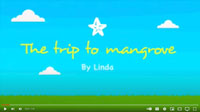MAP News Issue #573 – June 3, 2023
The MAP News | |
FEATURED STORYThe world’s biggest island country battles coastal erosion 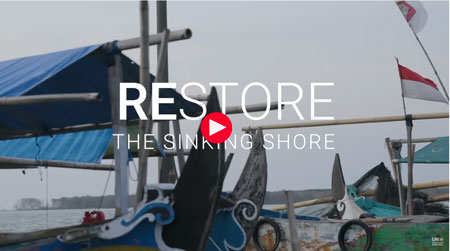 INDONESIA – We are experiencing a dangerous decline in nature: One million species are threatened with extinction, soils are turning infertile and water sources are drying up. But there are glimmers of hope: Made up of over 17,000 islands, Indonesia is the world’s biggest archipelago. Through climate related sea level rise, its shores are sinking. Fishing communities are now pioneering an ingenious solution to the challenge. Learn how they turn the tides. UN Environmental Programs provides leadership and encourages partnership in caring for the environment by inspiring, informing, and enabling nations and its people to improve their quality of life without compromising that of future generations. INDONESIA – We are experiencing a dangerous decline in nature: One million species are threatened with extinction, soils are turning infertile and water sources are drying up. But there are glimmers of hope: Made up of over 17,000 islands, Indonesia is the world’s biggest archipelago. Through climate related sea level rise, its shores are sinking. Fishing communities are now pioneering an ingenious solution to the challenge. Learn how they turn the tides. UN Environmental Programs provides leadership and encourages partnership in caring for the environment by inspiring, informing, and enabling nations and its people to improve their quality of life without compromising that of future generations.
GLOBAL From mangroves to fjords, coastal ecosystems can take up or emit greenhouse gases. But globally, they’re a vital sink  GLOBAL – Coastal ecosystems can absorb or emit the three main greenhouse gases: carbon dioxide, methane and nitrous oxide. We explored how coasts in ten regions of the world differ in greenhouse gas uptake and emissions. Our research published today in Nature Climate Change finds that, globally, our coastal ecosystems are a net greenhouse gas sink, but smaller emissions of potent methane and nitrous oxide gases reduce some of the carbon dioxide uptake. We found coasts in Europe and Russia are net emitters, while coasts in Southeast Asia and North America have a large uptake of these gases. Like upland forests and rainforests, ecosystems like coastal wetlands can take up atmospheric CO₂ and turn it into new leaves, roots and other organic matter. When some of this carbon is stored long-term in deep sediments, it can help battle rising CO₂ levels in our atmosphere. The coastal net greenhouse gas uptake should not be confused with carbon storage. Only part of the coastal greenhouse gas uptake is stored long-term in coastal sediments, while another part is transported to the ocean where it might be stored or released back to the atmosphere. GLOBAL – Coastal ecosystems can absorb or emit the three main greenhouse gases: carbon dioxide, methane and nitrous oxide. We explored how coasts in ten regions of the world differ in greenhouse gas uptake and emissions. Our research published today in Nature Climate Change finds that, globally, our coastal ecosystems are a net greenhouse gas sink, but smaller emissions of potent methane and nitrous oxide gases reduce some of the carbon dioxide uptake. We found coasts in Europe and Russia are net emitters, while coasts in Southeast Asia and North America have a large uptake of these gases. Like upland forests and rainforests, ecosystems like coastal wetlands can take up atmospheric CO₂ and turn it into new leaves, roots and other organic matter. When some of this carbon is stored long-term in deep sediments, it can help battle rising CO₂ levels in our atmosphere. The coastal net greenhouse gas uptake should not be confused with carbon storage. Only part of the coastal greenhouse gas uptake is stored long-term in coastal sediments, while another part is transported to the ocean where it might be stored or released back to the atmosphere.AFRICA The critical role of Indigenous Peoples and local communities 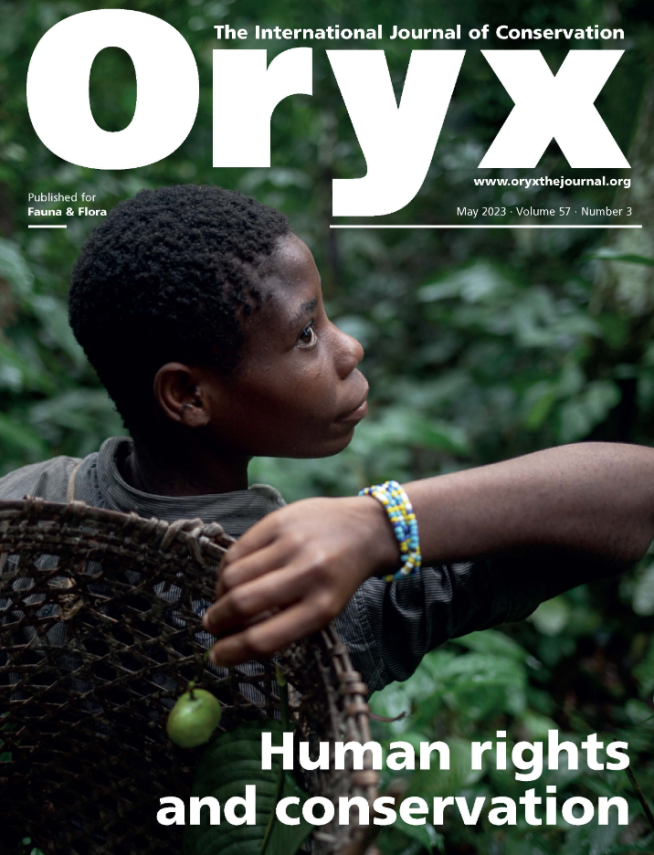 KENYA – Research has shown that Indigenous peoples and local communities can and often do play a critical role in conserving biodiversity, and that their territories contain high levels of biodiversity. However, many Indigenous peoples are facing threats to their land rights, including land grabbing and forced evictions, for development projects, extractive industries or even for conservation initiatives. “As Indigenous Peoples, we have been custodians of our lands, territories and waters for millennia and have deep interaction with the ecosystems where we live. Evidence shows our lands are among the most biodiverse on the planet,” said Lakpa Nuri Sherpa, Indigenous leader from Nepal. For example, a recent IPBES sustainability report released in 2022, found that policies supporting secure tenure rights for indigenous peoples, and equitable access to land, fisheries and forests, as well as poverty alleviation, create enabling conditions for sustainable use of wild species. Effective global biodiversity and conservation policy requires a human rights-based approach KENYA – Research has shown that Indigenous peoples and local communities can and often do play a critical role in conserving biodiversity, and that their territories contain high levels of biodiversity. However, many Indigenous peoples are facing threats to their land rights, including land grabbing and forced evictions, for development projects, extractive industries or even for conservation initiatives. “As Indigenous Peoples, we have been custodians of our lands, territories and waters for millennia and have deep interaction with the ecosystems where we live. Evidence shows our lands are among the most biodiverse on the planet,” said Lakpa Nuri Sherpa, Indigenous leader from Nepal. For example, a recent IPBES sustainability report released in 2022, found that policies supporting secure tenure rights for indigenous peoples, and equitable access to land, fisheries and forests, as well as poverty alleviation, create enabling conditions for sustainable use of wild species. Effective global biodiversity and conservation policy requires a human rights-based approachThe importance of the contributions and leadership of indigenous peoples and local communities in achieving biodiversity goals was also emphasized by Lucy Mulenkei, an Indigenous leader from Kenya, ahead of the adoption of the Kunming-Montreal Global Biodiversity Framework by the Convention on Biological Diversity in December 2022.
New Coastal Lagoon Education Guide Launched Advancing Understanding of Mangrove Range Dynamics in the Southeastern USA 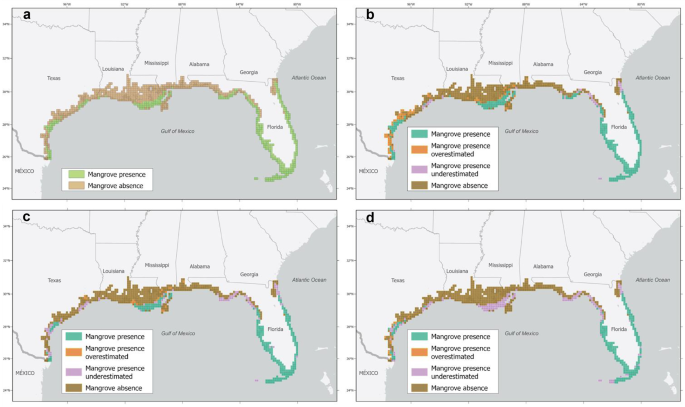 USA – Climate change is altering species’ range limits and transforming ecosystems. For example, warming temperatures are leading to the range expansion of tropical, cold-sensitive species at the expense of their cold-tolerant counterparts. In some temperate and subtropical coastal wetlands, warming winters are enabling mangrove forest encroachment into salt marsh, which is a major regime shift that has significant ecological and societal ramifications. Here, we synthesized existing data and expert knowledge to assess the distribution of mangroves near rapidly changing range limits in the southeastern USA. We used expert elicitation to identify data limitations and highlight knowledge gaps for advancing understanding of past, current, and future range dynamics. Mangroves near poleward range limits are often shorter, wider, and more shrublike compared to their tropical counterparts that grow as tall forests in freeze-free, resource-rich environments. USA – Climate change is altering species’ range limits and transforming ecosystems. For example, warming temperatures are leading to the range expansion of tropical, cold-sensitive species at the expense of their cold-tolerant counterparts. In some temperate and subtropical coastal wetlands, warming winters are enabling mangrove forest encroachment into salt marsh, which is a major regime shift that has significant ecological and societal ramifications. Here, we synthesized existing data and expert knowledge to assess the distribution of mangroves near rapidly changing range limits in the southeastern USA. We used expert elicitation to identify data limitations and highlight knowledge gaps for advancing understanding of past, current, and future range dynamics. Mangroves near poleward range limits are often shorter, wider, and more shrublike compared to their tropical counterparts that grow as tall forests in freeze-free, resource-rich environments.Women in Guyana plant mangroves to battle rising seas 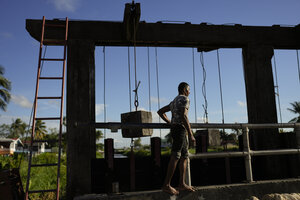 GUYANA – A small group of Indigenous women in northern Guyana are the latest weapon in the fight against climate change in this South American country where 90% of the population lives below sea level. Armed with drones, the women are scanning mangrove forests for illegal cutting and expect to soon start collecting soil samples and mangrove litter to measure the carbon held in remote coastal ecosystems that have long been out of reach for scientists. Such data could nudge the government to create policies and programs to protect critical areas. “We are merging traditional knowledge and scientific research to get all this information that we need but never had before and couldn’t afford to get,” said Annette Arjoon-Martins, head of Guyana’s Marine Conservation Society. The women’s efforts are considered key for Guyana, a small nation about the size of Britain that has a 285-mile-long coastline whose coastal plains lie an average of 6 feet below sea level. The coastline depends on a centuries-old sea defense system created by the Dutch during the colonial era. It includes a 280-mile seawall and relies on dozens of workers who set alarms night and day to manually open and close sluice gates known as “kokers” that prevent the Atlantic Ocean from flooding Guyana. GUYANA – A small group of Indigenous women in northern Guyana are the latest weapon in the fight against climate change in this South American country where 90% of the population lives below sea level. Armed with drones, the women are scanning mangrove forests for illegal cutting and expect to soon start collecting soil samples and mangrove litter to measure the carbon held in remote coastal ecosystems that have long been out of reach for scientists. Such data could nudge the government to create policies and programs to protect critical areas. “We are merging traditional knowledge and scientific research to get all this information that we need but never had before and couldn’t afford to get,” said Annette Arjoon-Martins, head of Guyana’s Marine Conservation Society. The women’s efforts are considered key for Guyana, a small nation about the size of Britain that has a 285-mile-long coastline whose coastal plains lie an average of 6 feet below sea level. The coastline depends on a centuries-old sea defense system created by the Dutch during the colonial era. It includes a 280-mile seawall and relies on dozens of workers who set alarms night and day to manually open and close sluice gates known as “kokers” that prevent the Atlantic Ocean from flooding Guyana.Mangrove Cuckoo makes ‘rare’ appearance in Galveston for first time since 1982  USA – Fort Worth birder Parker Allie created huge excitement in the birding community with his sighting of the first Mangrove Cuckoo in the Galveston area since 1982. Galveston Island posted about the “extremely rare” sighting that occurred over the weekend on Saturday, May 13. The Mangrove Cuckoo is among the most secretive and poorly known North American birds, according to the American Bird Conservancy. Within the United States, this tropical bird can be found only in dense mangroves along the southern coasts of Florida. Outside of its small range in Florida, the Mangrove Cuckoo is widespread from northern Mexico south through the West Indies and Central America to South America. The birds rarely stray from Mexico north into Texas and the Gulf Coast. “This cuckoo went coo-coo making a rare appearance in Texas,” Texas Parks and Wildlife posted on Facebook. The Great Texas Birding Classic, the biggest and longest birdwatching tournament in the United States, posted about the sighting as well. The organization said it was a great way to end the tournament and just in time for World Migratory Bird Day, which was on May 13. Although there is scant information on Mangrove Cuckoo population trends, the species appears to be declining in the United States, according to the American Bird Conservancy. The conservancy estimates a global breeding population of 200,000. Of these, about 40% are found in Mexico. USA – Fort Worth birder Parker Allie created huge excitement in the birding community with his sighting of the first Mangrove Cuckoo in the Galveston area since 1982. Galveston Island posted about the “extremely rare” sighting that occurred over the weekend on Saturday, May 13. The Mangrove Cuckoo is among the most secretive and poorly known North American birds, according to the American Bird Conservancy. Within the United States, this tropical bird can be found only in dense mangroves along the southern coasts of Florida. Outside of its small range in Florida, the Mangrove Cuckoo is widespread from northern Mexico south through the West Indies and Central America to South America. The birds rarely stray from Mexico north into Texas and the Gulf Coast. “This cuckoo went coo-coo making a rare appearance in Texas,” Texas Parks and Wildlife posted on Facebook. The Great Texas Birding Classic, the biggest and longest birdwatching tournament in the United States, posted about the sighting as well. The organization said it was a great way to end the tournament and just in time for World Migratory Bird Day, which was on May 13. Although there is scant information on Mangrove Cuckoo population trends, the species appears to be declining in the United States, according to the American Bird Conservancy. The conservancy estimates a global breeding population of 200,000. Of these, about 40% are found in Mexico.
ASIA Andhra Pradesh to bolster mangrove cover along the coast 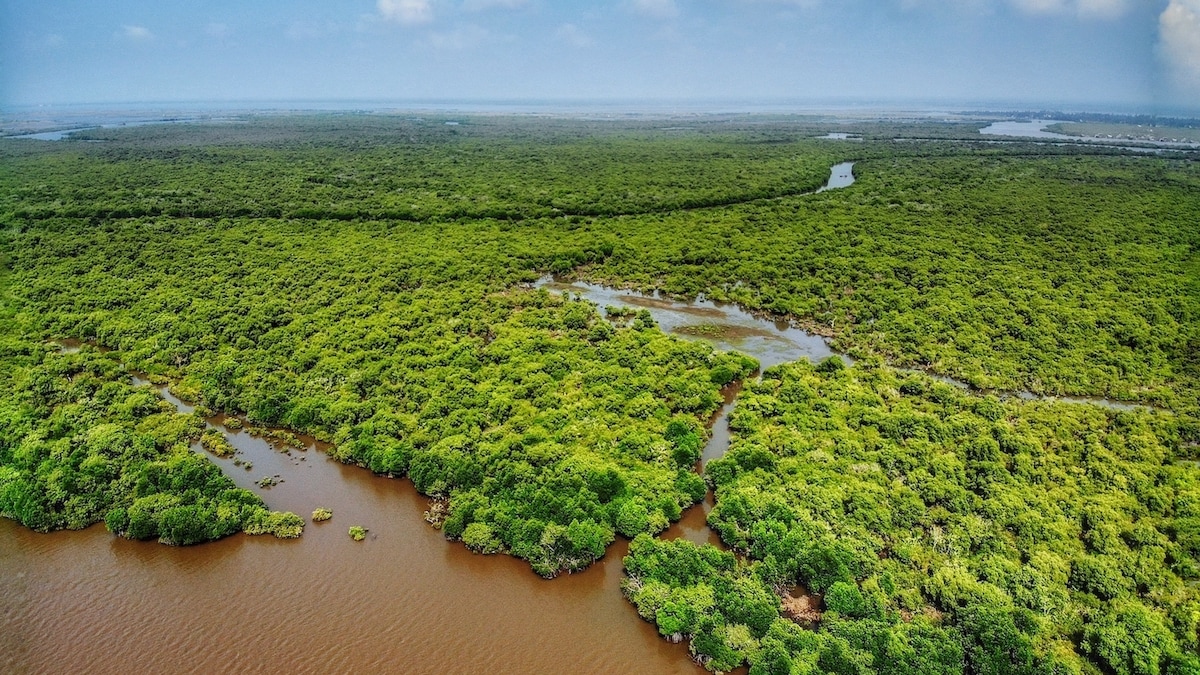 INDIA – To tackle climate change, the Centre has decided to scale up mangrove forest cover in coastal states. The project titled as ‘Mission Mangrove Initiative for Shoreline Habitats and Tangible Income’ (Mishti) has been designed giving thrust to enhance resilience of coasts for protection of coastal life, livelihood and infrastructure against climate change impacts. This is going to be a big game-changer for ecological balance particularly in Andhra Pradesh (AP), the worst victim of cyclones and floods.With the Centre giving green signal to link NREGS to take up compensatory afforestation programme, the state government has prepared plans to increase mangrove forest cover along the coast under the new scheme. AP has the third largest mangrove cover among the coastal states. The state government will launch the five-year project to reclaim mangrove forest in eight locations. INDIA – To tackle climate change, the Centre has decided to scale up mangrove forest cover in coastal states. The project titled as ‘Mission Mangrove Initiative for Shoreline Habitats and Tangible Income’ (Mishti) has been designed giving thrust to enhance resilience of coasts for protection of coastal life, livelihood and infrastructure against climate change impacts. This is going to be a big game-changer for ecological balance particularly in Andhra Pradesh (AP), the worst victim of cyclones and floods.With the Centre giving green signal to link NREGS to take up compensatory afforestation programme, the state government has prepared plans to increase mangrove forest cover along the coast under the new scheme. AP has the third largest mangrove cover among the coastal states. The state government will launch the five-year project to reclaim mangrove forest in eight locations.OCEANA Future climate change will increase risk to mangrove health in Northern Australia  AUSTRALIA – Mangroves of the wet-dry tropical Gulf of Carpentaria, Australia, survive in a harsh environment. One of the worst recorded mangrove dieback events occurred during the El Niño of 2015 following an extreme, two-year sea level drop, illustrating that enhanced climate variability can exacerbate major stressors for these ecosystems. As well as sea level variability, maximum daily temperatures in the Gulf of Carpentaria are also linked to climate variability and change, and may play an important role in overall mangrove health. Here we address how these two factors: sea level variability and maximum daily temperatures, are projected to change under several future emissions scenarios. Climate projections from the sixth generation of Coupled Model Intercomparison Project indicate an increased occurrence of anomalously low and high sea level events in the coming century. This, alongside enhanced temperature stress, is likely to significantly increase risk to mangrove health in this region. The rate of increase of low and high sea level events, and high temperature events, is scenario-dependent, and is largest for a high-emissions scenario. This study addresses how stressors, particularly extreme sea level variability and Tmax, are projected to change in future and whether increased variability in El Niño Southern Oscillation (ENSO) might contribute to further stress. AUSTRALIA – Mangroves of the wet-dry tropical Gulf of Carpentaria, Australia, survive in a harsh environment. One of the worst recorded mangrove dieback events occurred during the El Niño of 2015 following an extreme, two-year sea level drop, illustrating that enhanced climate variability can exacerbate major stressors for these ecosystems. As well as sea level variability, maximum daily temperatures in the Gulf of Carpentaria are also linked to climate variability and change, and may play an important role in overall mangrove health. Here we address how these two factors: sea level variability and maximum daily temperatures, are projected to change under several future emissions scenarios. Climate projections from the sixth generation of Coupled Model Intercomparison Project indicate an increased occurrence of anomalously low and high sea level events in the coming century. This, alongside enhanced temperature stress, is likely to significantly increase risk to mangrove health in this region. The rate of increase of low and high sea level events, and high temperature events, is scenario-dependent, and is largest for a high-emissions scenario. This study addresses how stressors, particularly extreme sea level variability and Tmax, are projected to change in future and whether increased variability in El Niño Southern Oscillation (ENSO) might contribute to further stress.
Pease consider donating to MAP to keep it going. *Articles in this newsletter may mention practices being used and/or show exagerated results being claimed without proof. Stories are presented here in effort to show mangrove related activity around the world and do not necessarily reflect Mangrove Action Project’s views or mangrove restoration best-practices. NOTICE
ACTION ALERTSUGANDA Stop criminalizing pipeline protesters! SIGN THE PETITION Save Endangered Species From SpaceX | |
Mangrove Action Project Click here to view past newsletters
| |

 CAYMAN ISLANDS – The Mangrove Education Project (MEP) launched its new curriculum of the Cayman Islands Coastal Education Guide (CEG)
CAYMAN ISLANDS – The Mangrove Education Project (MEP) launched its new curriculum of the Cayman Islands Coastal Education Guide (CEG)


